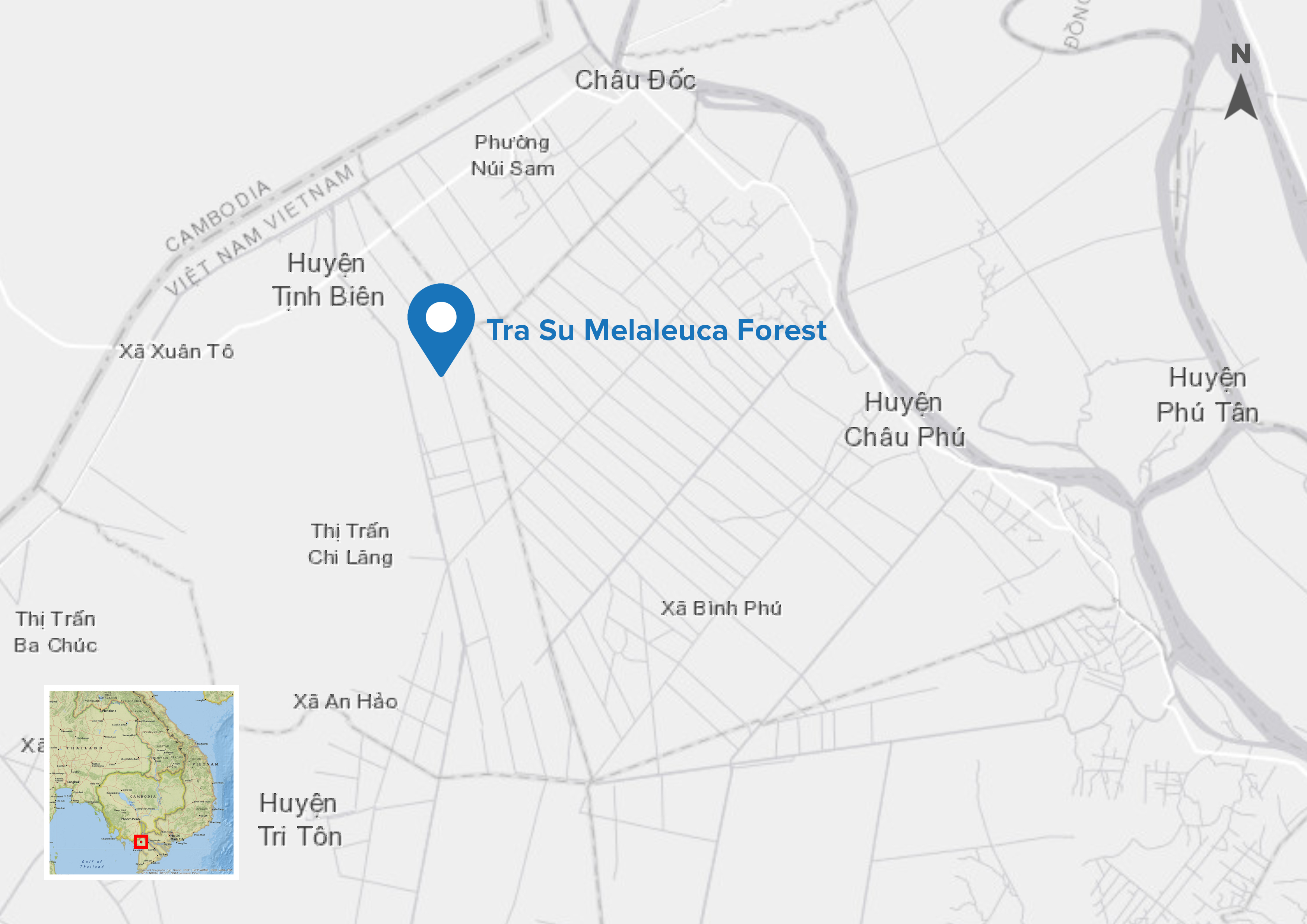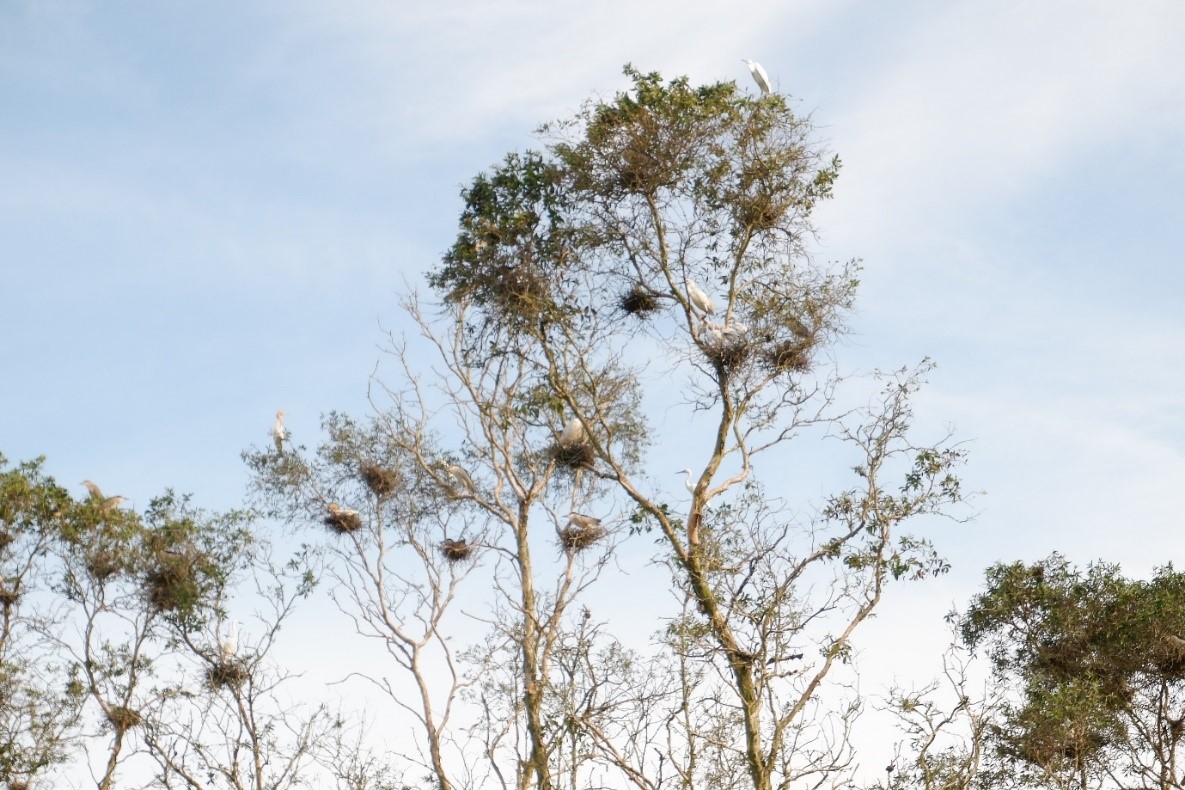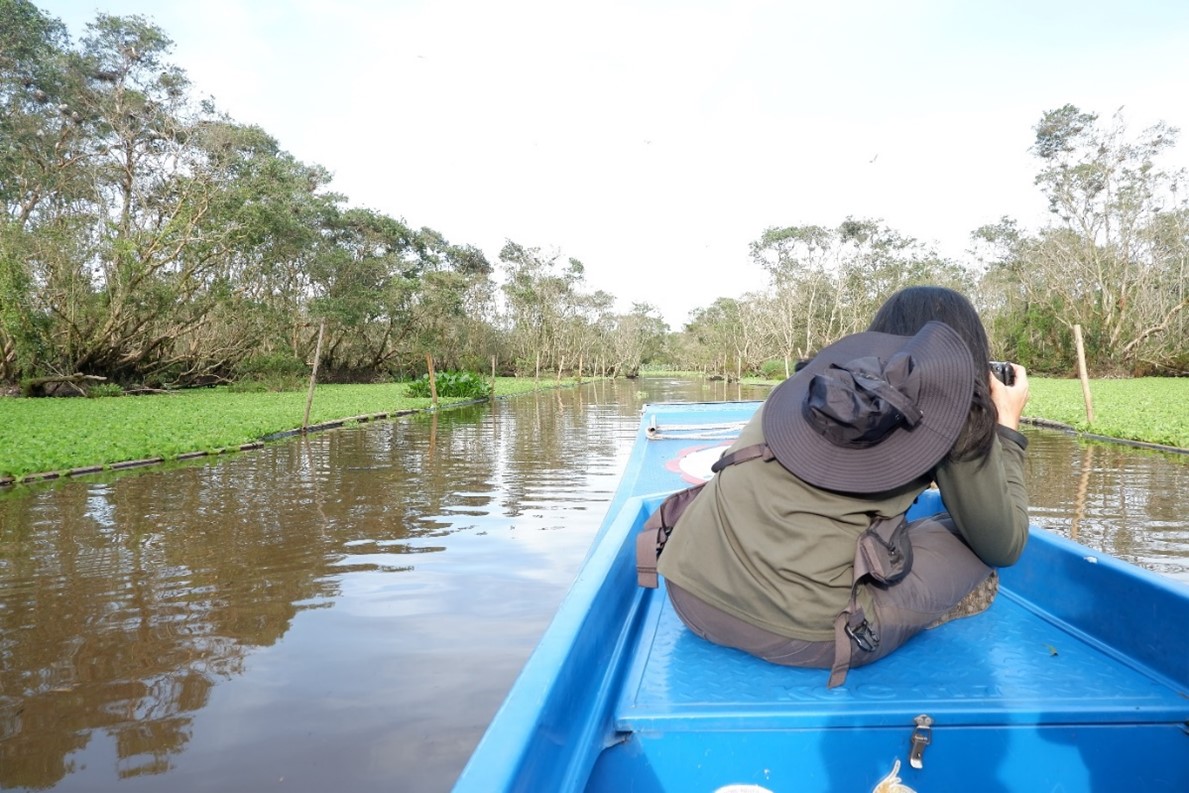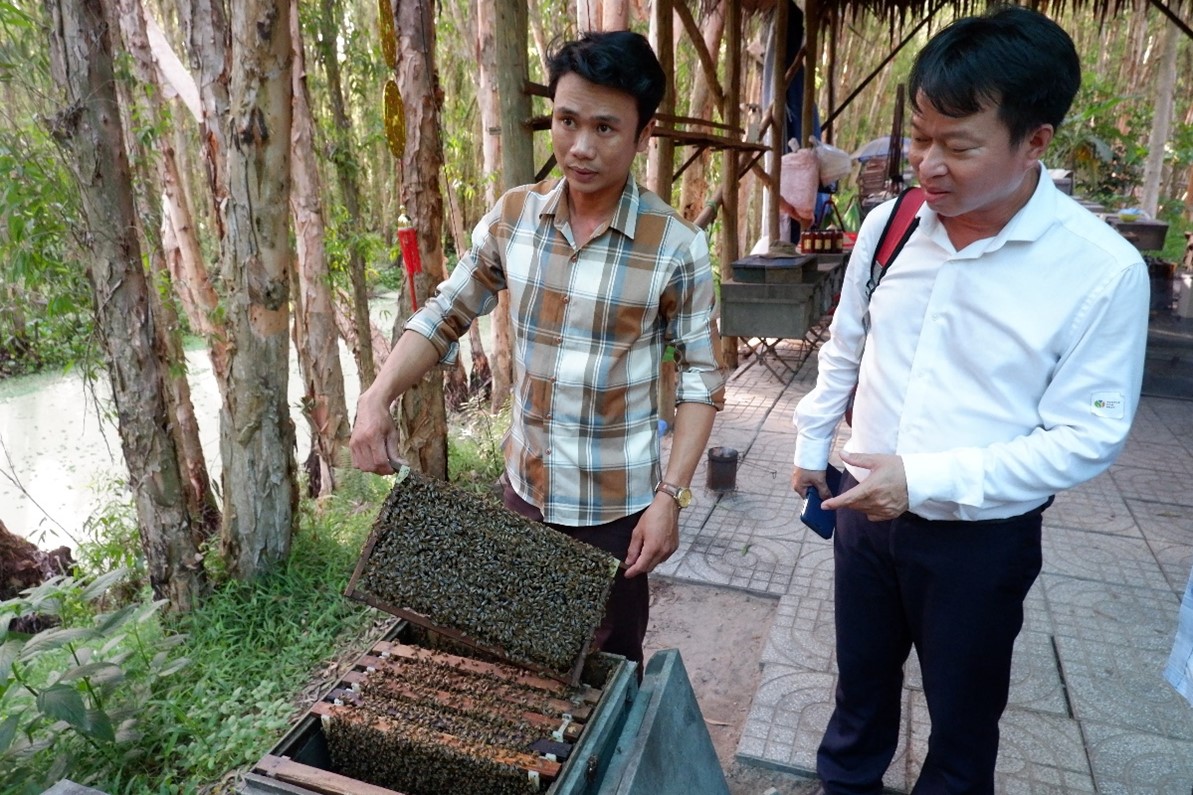Stories
When Peatland Sustainability Meets Eco-Tourism in the Tra Su Melaleuca Forest, Vietnam
Oct 6, 2022 by Dede SulaemanBanner Image By : Dede Sulaeman/WRI/PFP
Intriguing green canals surrounded by trees immersed in water, sheltered under a roof of plants, and cradled by birds marked our remarkable and unforgettable visit to the Tra Su Melaleuca Forest in Vietnam. We needed an hour and forty minutes to reach the area from Long Xuyên City, the capital of An Giang Province. Tra Su Melaleuca Forest is located in Van Giao Commune, Tinh Bien District, An Giang Province, to the West of the Hau river and just about 10 km from the border with the Takéo Province of Cambodia.

Before the 1980s, this area was ravaged by the Vietnam war and was just an abandoned wetland overgrown with weeds and grass. Authorities then replanted thousands of cajuput trees (Melaleuca leucadendra), which are cousins of the tea tree, in 1984. This tree was chosen because it grows well in acid-sulphate soil and peatlands. Melaleuca is a highly invasive tree and is well-known for its good adaptive ability to grow on degraded lands.
At the time of the visit on May 2022, the latest data stated that the forest covers more than 10 square kilometres and was home to over 70 bird species such as black-crowned night herons (Nycticorax nycticorax), purple herons (Ardea purpurea), and little cormorants (Microcarbo niger). There are also rare species like the painted stork (Mycteria leucocephala) and oriental darter (Anhinga melanogaster). Many bird species living in this area are listed in the red data book1 published by the International Union for Conservation of Nature (IUCN).
Home to 11 species of mammals, 22 species of reptiles, 5 species of amphibians, and 23 species of fish, the area has become An Giang Province’s symbol of natural beauty. There are also 140 species of plants in this area, most of which are Melaleuca, which led to the name: Tra Su Melaleuca Forest. With this robust number of plants, the submerged forest has the second largest number of plant species in the Mekong Delta.

According to Thanh et al. (2014), Tra Su Melaleuca Forest is one of the three remaining peat swamp forests in the Mekong Delta (along with U Minh Thuong in Kien Giang Province and U Minh Ha in Cà Mau Province). It can also be observed through the brownish or blackish water we found during the trip, and based on the information provided by our guide, the water acidity is also high. These two characteristics are among the common properties of peatlands. Unfortunately, the peat depth in this area remains unknown.
Along with the decision from An Giang Province officials to establish the Tra Su protection area in 2002, ecotourism in Tra Su Melaleuca Forest has been flourishing since and many activities can be done by visitors, such as canoeing, boating, and sightseeing around the area. Tra Su Melaleuca Forest has a core area of 845 hectares and a buffer2 area of 643 hectares. The protected and restoration area in Tra Su Melaleuca Forest are 240 and 245 hectares respectively. This means some parts of the wetlands are not accessible to the public and visits are supervised. Three kinds of vehicles can be used to explore the area: motorbikes, boats with engines, and boats without engines. If visitors choose to use boats, they will cross the wetland filled with water lilies and lotus flowers and enjoy the huge diversity of this area.

Ecotourism activities in this area positively impact the surrounding communities, including local community development and employment opportunities. Medicinal plants are also harvested from the area, as are honey, fish, and other aquatic organisms. Nevertheless, communities are not allowed to live inside the area and they cultivate rice and crops outside or surrounding the area.

Based on the International Ecotourism Society (2015), ecotourism refers to responsible travel to natural areas that conserves the environment, sustains the well-being of the local people, and involves interpretation and education. The main principle of ecotourism is that it makes as little or less environmental impact as possible and helps sustain biodiversity, which encourages the conservation of habitat and wildlife. Ecotourism can provide environmentally friendly forms of livelihoods. Instead of local people being forced into destroying forests, poaching, logging, or quarrying, it opens up more sustainable options. Ecotourism also creates local job opportunities, which is a positive outcome for communities. This can include the hospitality industry, driving, catering, and many more. From Tra Su Melaleuca Forest, we learned that ecotourism can contribute to the conservation and protection of peatlands and provide economic benefits at the same time.
[1] The Red Data Book is a public document that is created for recording endangered and rare species of plants, animals, fungi as well as some local subspecies that are present in a particular region.
[2] The area that surrounds or adjoins the core areas where ecosystem is conserved alongside compatible human uses of the land or water